Kyudo: The Beautiful Art of Japanese Archery
Kyudo combines the physicality of archery with the mindfulness of meditation, making it a unique aspect of Japanese heritage. In this article, we will unpack the essentials of kyudo, including the art’s history and training methods. It will cover specialized equipment such as the asymmetrical yumi bow, which is still used today. We will explore the culture of Kyudo, with its principles of truth, beauty, and goodness, and its links to Japanese Zen Buddhism.
The Essence of Kyudo
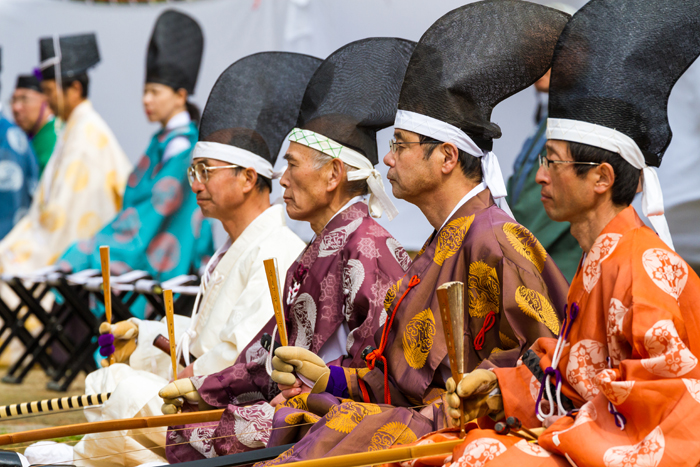
Kyudo, also known as “the way of the bow,” transcends a simple technique of shooting arrows. It is an art that becomes a pathway towards spiritual and personal refinement. This practice is deeply rooted in Japanese culture and serves as a way for the practitioner to pursue truth, goodness, and beauty. This triad is not just a lofty ideal but the very heart of every movement, every shot, and every breath taken by the kyudoka (Kyudo practitioner).
In the silence that envelops a Kyudo practitioner, the principles of Zen Buddhism resonate. Each arrow released is a testament to the archer’s sincerity and commitment, a physical manifestation of the inner self. Eugen Herrigel, in his book ‘Zen in the Art of Archery’, illustrates this spiritual dimension of Kyudo, revealing how the bow could serve as a mirror to the soul. Kyudo is not a battle against an opponent but a dialogue with oneself, a challenge to overcome internal turbulence and attain a state of perfect harmony.
The stationary target in Kyudo symbolizes the introspective nature of this martial art, where the real challenge lies within oneself. The archer’s journey is one of self-improvement and discipline, with each arrow nocked a step closer to the realization of self-truth. In the discipline of Kyudo, the archer strives to align their actions with the noble values that the art represents, making it a unique and essential element of Japanese martial arts.
The Asymmetrical Longbow
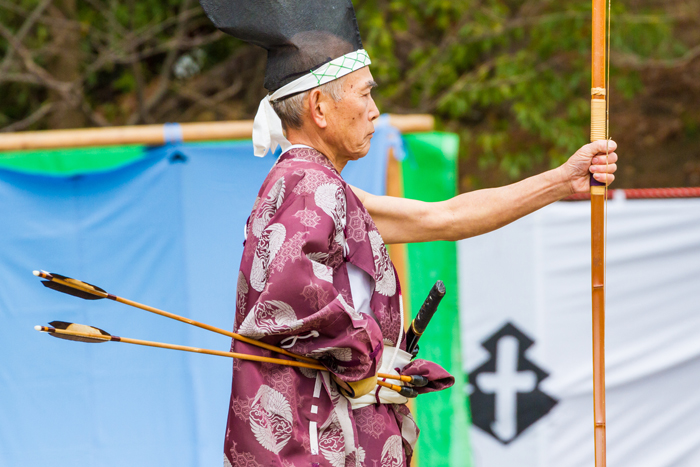
The yumi, or Japanese longbow, exemplifies traditional craftsmanship and forms a distinctive feature of Kyudo’s style. With its asymmetrical structure, archers shoot correctly by holding the bow below its center, a stark contrast to the symmetrical bows of Western archery. This ingenious design, perfected over centuries from the early maruki-yumi to the complex laminated bows of the Heian period, caters to the unique needs of shooting from horseback and kneeling positions. Today, modern Japanese archery continues to uphold these time-honored techniques and principles.
The yumi is a testament to the art of archery, each one meticulously constructed from bamboo, wood, and leather, embodying the spirit and history of Japanese bows. The tsuru, or bowstring, once crafted from hemp, has evolved with modern materials, yet the soul of the yumi remains unchanged. The bow’s creation is a ritual in itself, a sacred act that imbues the yumi with life and purpose.
Modern kyudo bows have retained the essence of their ancient predecessors, ensuring that even as times change, the connection to the past remains unbroken. The distinct Japanese asymmetrical longbow is not just a weapon; it is a vessel of tradition, bridging the gap between the traditional archery of the past and the Kyudoka of today.
Techniques and Training
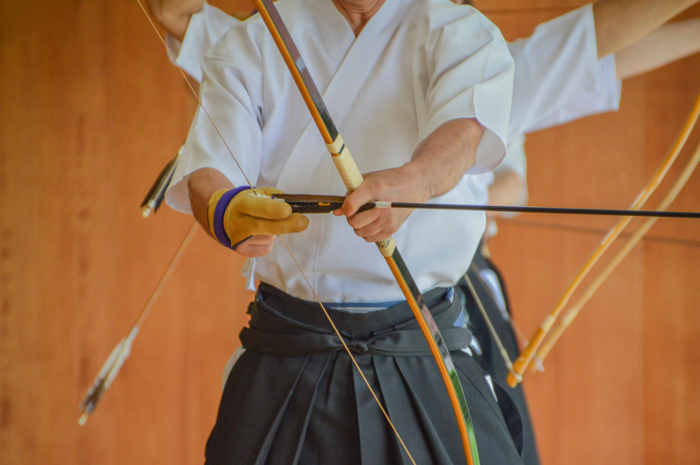
Mastering kyudo requires diligent practice and refinement of techniques that bring together the archer’s body and spirit. For the novice, the journey begins with the gomu yumi, a rubber bow that acquaints the practitioner with the effort required for a true shot. Through exercises like karabiki, drawing the bow without an arrow, and paying meticulous attention to the release, one learns the essence of beautiful shooting.
Strength training is integral to Kyudo, as it builds the muscles necessary for the artful and steady draw of the bow. Using a rubber bow loop or carrying weights with dorsiflexed wrists, the archer develops the power to wield the long bow without engaging the improper muscles, such as the shoulders. This careful cultivation of strength ensures that when an archer stands in the practice hall, every technique unites to create a seamless flow of motion.
The dedication to regular practice, with the goal of shooting a thousand arrows a month, is the crucible where skill is forged. It is here, in the daily repetition, that the archer finds the perfect harmony between technical elements and spiritual development.
Kyudo Equipment
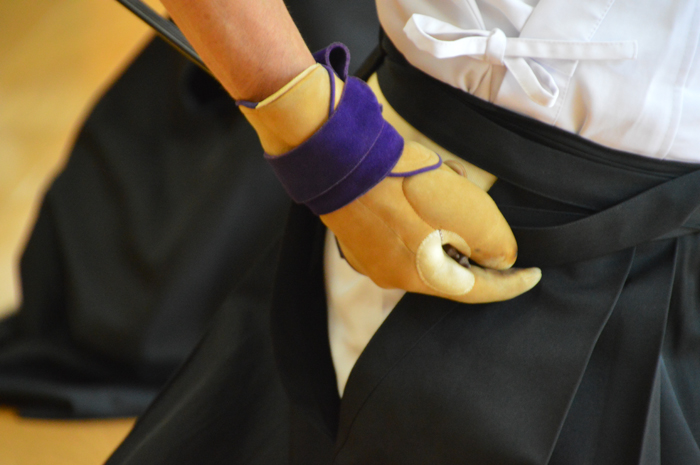
Practicing kyudo requires equipment that has been used throughout the martial arts historical traditions. The Kyudo arrows, or Ya, are crafted from the bamboo species yadake and are distinguished by the feather’s natural curve into two types: haya for left-curving fletchings and otoya for right-curving ones. The evolution of materials may have introduced aluminum shafts for durability, especially in school clubs, but the meticulous care for these kyudo arrows, such as regular oiling, speaks to the enduring respect for the craft.
The yugake, a Kyudo glove, is essential for the archer to twist the string with only the thumb, a technique that has been refined over centuries from the kataboshi to the soft glove of today. This glove is often handmade, which is a testament to the importance placed on precision and tradition in Japanese martial arts. The yajiri (arrowheads) are not merely points but vital components that define the flight and accuracy of kyudo arrows.
The yumi bow, the centerpiece of Kyudo equipment, is a masterpiece of bamboo, wood, and leather, embodying the distinct Japanese asymmetrical longbow revered in Japanese culture. Every piece of equipment, from the heavy bow to the fletched arrows, contributes to the unique experience of Kyudo. This precision and attention to detail are what make Kyudo such a unique martial art.
Schools and Styles
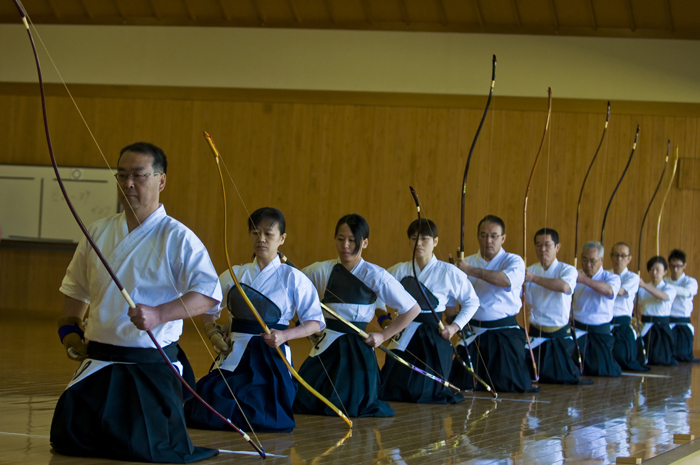
Kyudo is a diverse martial art that boasts a variety of schools and styles that have evolved over centuries. Some of the notable schools include:
- Henmi-ryu, the first documented kyujutsu ryuha, was established in the 12th century
- Heki-ryu, known for its emphasis on aesthetics
- Yamato-ryu, which focuses on efficiency and martial utility
Each school brings its own unique style, offering practitioners a wealth of choices to find the path that resonates most deeply with their spirit while also considering the Chinese influence on certain practices.
The Ogasawara-ryū, one of the oldest schools, has had a profound influence on the mounted archery techniques that permeate modern practice. Meanwhile, the Heki School, grounded in the teachings of its founder, Danjoh Masatsugu Heki, stands out for its notable contributions to the art. The interplay between these various forms has enriched Kyudo, allowing it to thrive as a dynamic and multifaceted martial art.
In an effort to bring together kyudoka from different traditions, a standardized form was established through the Kyudo Manual in 1953, and a ranking system was introduced in 1923. These guidelines and ranks have allowed practitioners of many schools to share the way of the bow, fostering unity within diversity and ensuring that the art’s core principles remain intact across all expressions of Kyudo.
Kyudo Competitions and Ceremonies

Kyudo competitions and ceremonies showcase focus and formality, echoing the depth and solemnity of this martial art. Hearkening back to the Tōshiya contests of the Edo period, modern Kyudo contests continue to celebrate this tradition. The sequence of formal entrances, bows, and steps known as hassetsu exemplifies the ceremonial actions that set Kyudo apart from western archery.
The philosophy of “correct shooting is correct hitting,” or seisha seichū, is the cornerstone of Kyudo competitions, emphasizing the intrinsic link between form and success. Competitions in Kyudo are as diverse as the practitioners themselves, with participants from a wide range of ranks and educational backgrounds.
Targets in Kyudo competitions vary, from the makiwara for close-range practice to the mato for longer distances, each demanding a different aspect of the archer’s skill. The Sharei, a shooting ceremony influenced by Chinese thought, places the highest importance on courtesy, reiterating the respect and reverence that are fundamental to the ways of the bow within Kyudo practice.
Kyudo Around the World
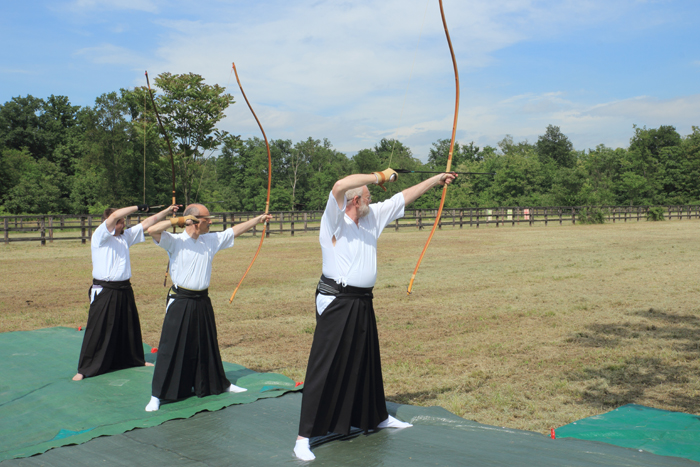
Although Kyudo is firmly anchored in Japanese tradition, it has charmed enthusiasts worldwide, crossing cultural boundaries. Its appeal lies not only in the physical discipline but also in the mental fortitude and inner peace. Recognized as a sport, Kyudo’s philosophy and techniques offer a refreshing contrast to other martial arts, contributing to its worldwide popularity.
The international adoption of Kyudo is facilitated by its accessibility to all ages and genders. With bows tailored to the archer’s height and strength, the art is widely practiced by a diverse community of all ages and experience levels. Groups like Zenko, rooted in Heki Ryu Bishu Chikurin-ha, have expanded Kyudo’s reach, establishing strongholds in regions such as North America and Europe, where it is embraced with the same reverence as in its homeland.
Kyudo’s journey from the archery ranges of Japan to the dojos of the world is a story of cultural exchange and shared human experience. It is a testament to the universal human quest for mastery, discipline, and a deeper connection with oneself.
Finding a Kyudo Dojo
For those drawn to the elegance of Kyudo and eager to learn, locating a Kyudo dojo marks the beginning of this enriching journey. Dojos are sanctuaries where the art of Japanese archery is taught, offering lessons and providing the necessary equipment and attire for practice. Whether you are a beginner eager to take the first shot or an experienced archer aiming to refine your skills, dojos provide a range of courses and classes to cater to all levels.
Kyudo dojos come in two main types: Kinteki-dojo for close-range archery and Enteki-dojo for long-distance archery, each specializing in different aspects of the sport. In these spaces, individuals are not only instructed in the techniques of Kyudo but are also imbued with its philosophy, learning the deeper significance behind each movement and shot.
Embarking on the path of Kyudo begins with a single step into the dojo. Here, amidst the scent of resin powder and the whisper of arrows, the journey of a thousand miles commences, guided by the wisdom of the sensei and the camaraderie of the kyudoka.
Mounted Archery: Kyubajutsu
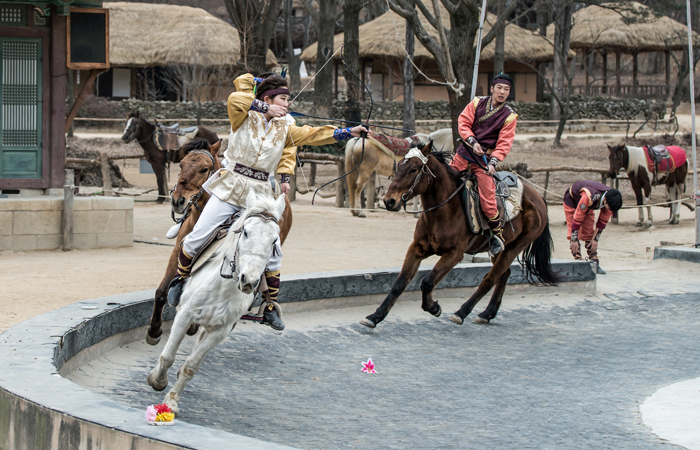
Kyubajutsu refers to the art of mounted archery and resonates with the stories of feudal Japan and the heritage of the samurai class. A martial discipline that once determined the fate of battles, kyubajutsu has evolved to influence the ceremonial and spiritual aspects of modern Kyudo practice. During the Kamakura period, variations such as yabusame and kasagake were not only martial skills but also popular sports, reflecting the martial arts’ integration into Japanese culture.
The founding of archery schools by descendants of Henmi Kiyomitsu, such as Takeda-ryu and Ogasawara-ryu, ensured that the techniques and traditions of mounted archery would endure through the ages. These schools have significantly contributed to the current practices of Kyudo, embedding the essence of kyubajutsu within the art.
The relevance of kyubajutsu today is seen in its ceremonial importance, where it is performed as a display of skill and spiritual connection. Though the days of the samurai are long past, the art of mounted archery remains a constant reminder of the depth and history that influenced the practice of kyudo.
Summary
From the distinct asymmetry of the yumi to the precision of the yugake glove, each element of Kyudo tells a story of a culture that has found its home in the art of Japanese archery. Whether it is practiced in the serene dojos of Japan or in Kyudo clubs around the world, the essence of Kyudo remains unchanged. Kyudo is defined by a pursuit of truth, goodness, and beauty, and it is a martial art with meditative tranquility rarely found in the modern world. May the ancient art of Kyudo continue to inspire and guide those who seek its path.
Frequently Asked Questions
Is archery common in Japan?
Yes, archery is common in Japan, with many Japanese high schools having Kyudo clubs where students practice archery as an extracurricular activity.
What does Kyudo mean in English?
Kyudo means “the way of the bow” in English, originating from older Japanese military traditions.
What is the philosophy of Kyudo?
The philosophy of Kyudo emphasizes the importance of maintaining serenity and forming connections with others, which can serve as a foundation for overcoming moral challenges in modern times.
What is the difference between kyudo and archery?
The main difference between Kyudo and archery is that kyudo focuses on a formalized and precise form of shooting, while archery allows for more flexible forms of shooting.
Why is the Japanese bow asymmetrical?
The Japanese bow is asymmetrical to be held below its center, which is advantageous for shooting from horseback and kneeling positions. This design has evolved historically and is essential to Kyudo’s unique shooting style.









